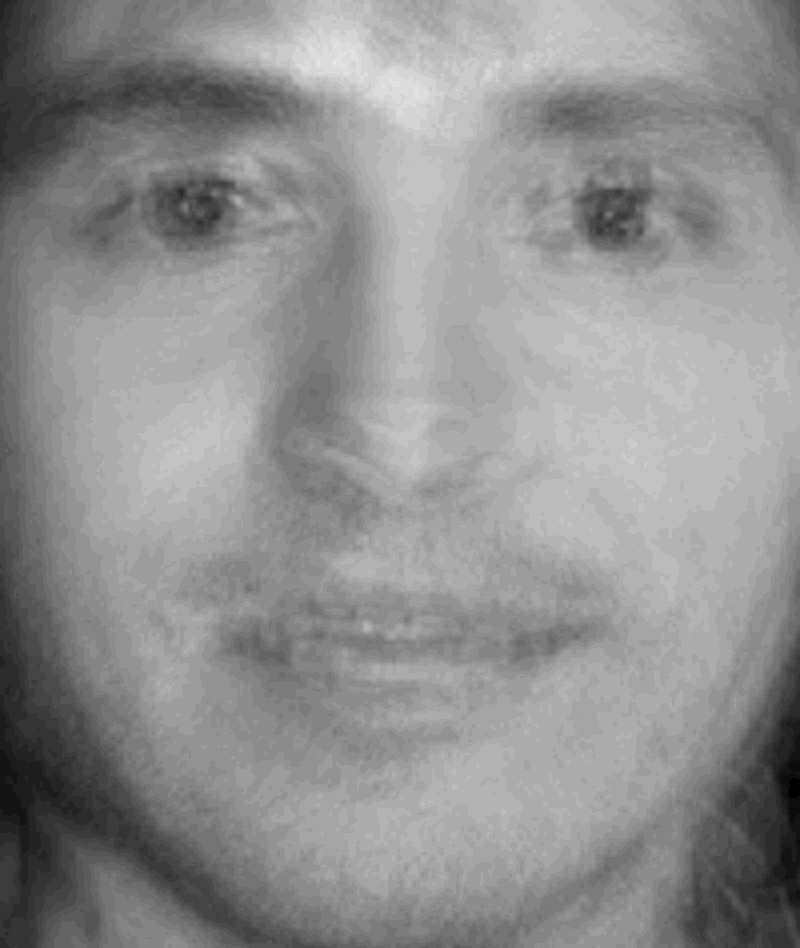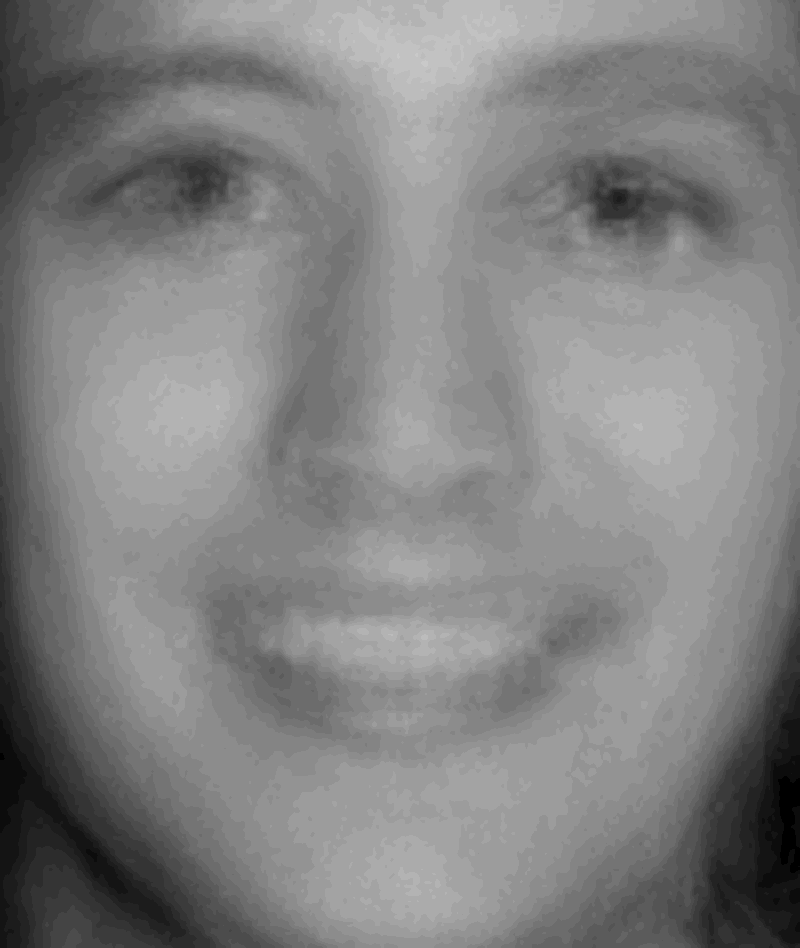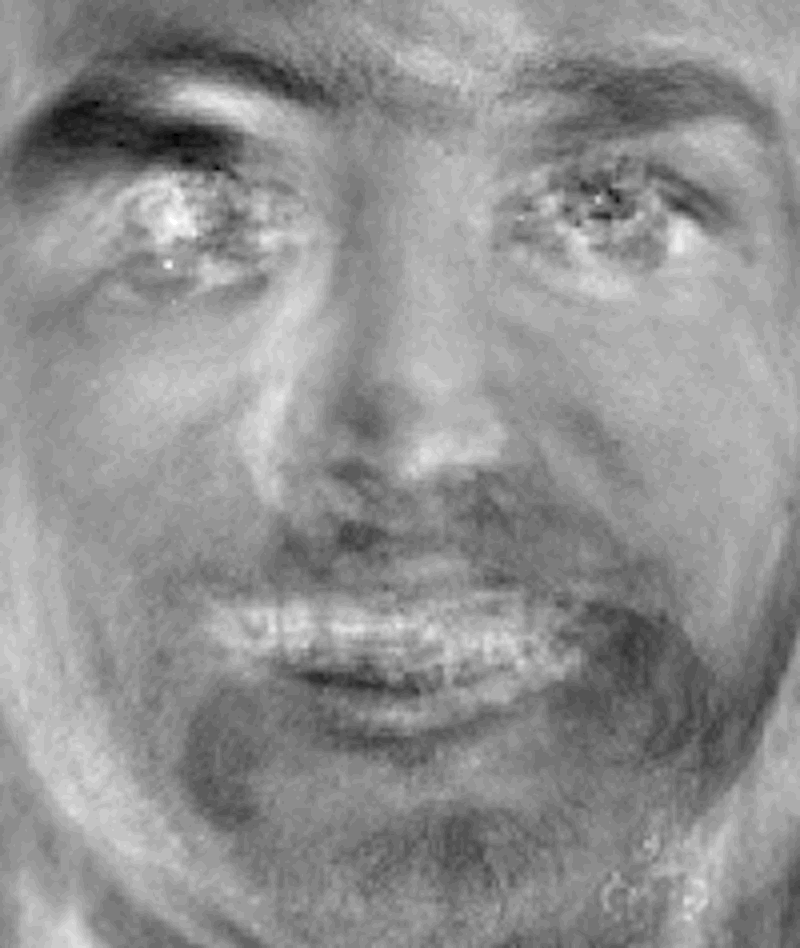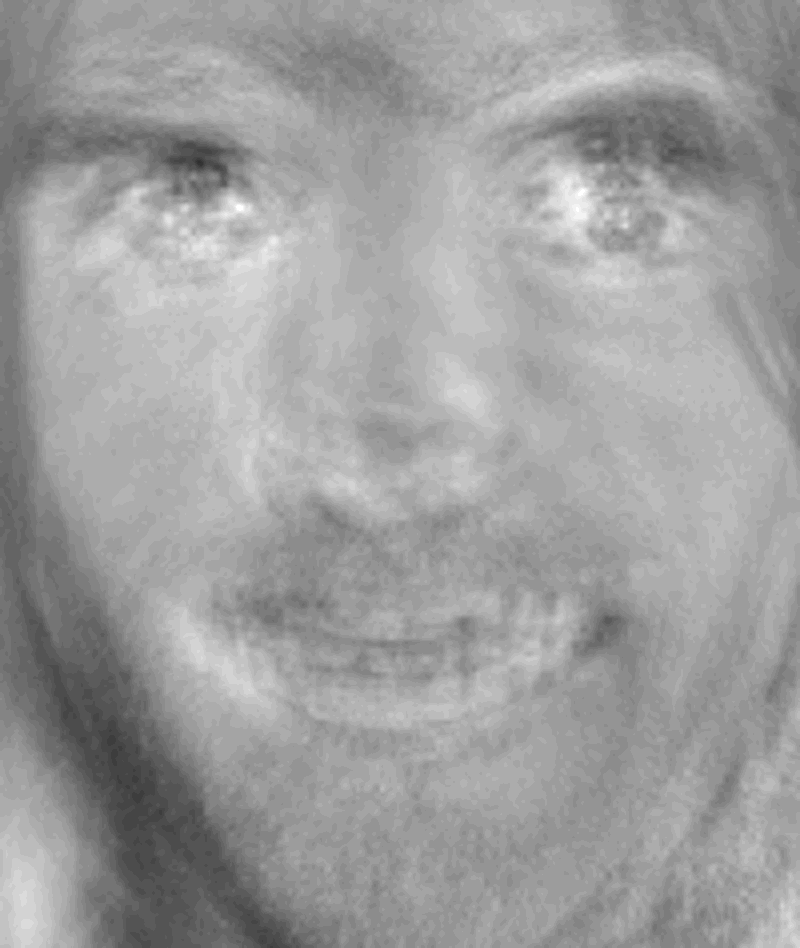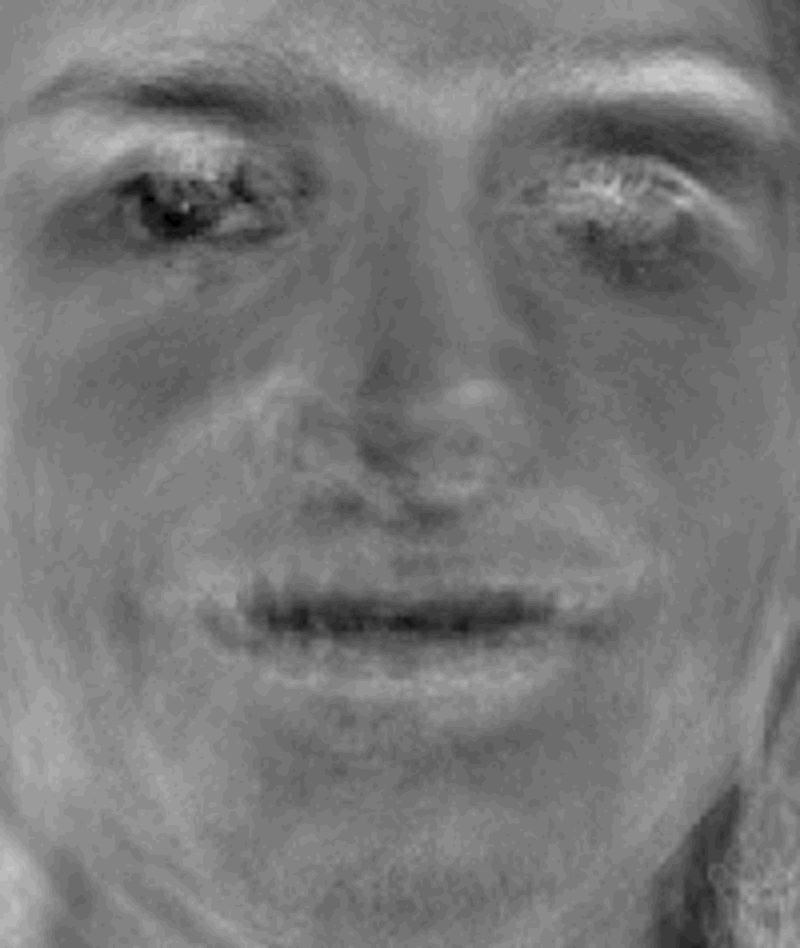Spurious Memories
In 2007 I developed Spurious Memories as an experiment in artificial creativity. For the purposes of this project I defined it as “the generation of an output that was not explicitly learned.” I designed a system that would connect a principal components analysis neural network with a self-organizing map, and I trained it on images of faces. I was Inspired by Hopfield neural networks, the concept of content-addressable memories, and facial recognition algorithms.
The system had two modes of operation. The first was recognition. You could present it with an image of a face from the training data and it would identify it. Or you could present a slightly distorted version of that same image and it would recognize it. Or you could present some other kind of image: random noise, clouds, burnt toast, and it would recognize something, though more likely than not it wouldn’t be one of the faces it had been taught, it would be a kind of ghost face, a spurious memory composed of an assemblage of statistical components of other faces. In other words, it could recombine aspects of its experience to generate new images.
The second mode of the system was associative. The research I drew on came from computational approaches to modeling psychological states, including dreams. I wondered what the dreams of a facial recognition system would look like, and I implemented a recurrent mode that would start with a random input and then drift along to neighboring states. The videos displayed here demonstrate this dream-like mode of the system trained on two different sets of faces and are exhibited as a diptych. One dataset was specifically collected for facial recognition research at Rice University and was well normalized. The other set were pictures of my cohort at NYU and were quite variant and unaligned. The faces generated by the Rice dataset are much more clearly facelike, while the ones from NYU, like the training data, are a bit more divergent.
Read more about the project in my exhibition essay.
More information can be found in the project archive.
